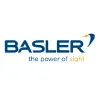The global ultra-wideband (UWB) market is a burgeoning landscape at the forefront of wireless communication technology. UWB, characterized by its broad frequency spectrum and low power consumption, is revolutionizing connectivity in various industries. Industries such as consumer electronics, healthcare, automotive, and industrial automation are increasingly integrating UWB for its exceptional accuracy in short-range communications. The adoption of UWB in smart devices, asset tracking, and real-time positioning systems is expanding its market footprint. As technological advancements continue, the global UWB market is poised for sustained growth, providing efficient, reliable, and versatile solutions for diverse connectivity needs across different sectors.
Data Bridge Market Research analyses that the Global Ultra-Wideband (UWB) Market value, which was USD 1.16 billion in 2021, is expected to reach the value of USD 1.84 billion by 2029, at a CAGR of 5.90% during the forecast period of 2022-2029.
"Increased R&D investment drive the market growth"
The surge in strategic market collaborations is catalyzing a noteworthy increase in funds dedicated to the advancement of cutting-edge technology and automated machinery. This heightened focus on research and development is a testament to the industry's commitment to fostering innovation. The growing pool of investments is anticipated to carve the way for transformative breakthroughs, pushing the boundaries of what is achievable in various sectors through the infusion of advanced and automated technologies.
What restraints the growth of the global ultra-wideband (UWB) market?
" Stringent environmental regulations hamper the market growth"
The market faces hindrances due to the increasing enforcement of rigorous environmental regulations on industries. These regulations, aimed at promoting sustainability, pose hurdles for market growth. Additionally, stringent controls on product approvals further limit the scope for expansion. Navigating through compliance complexities becomes a critical factor, demanding industries to adapt to eco-friendly practices while adhering to regulatory frameworks, impacting the overall growth trajectory of the market.
Segmentation: Global Ultra-Wideband (Uwb) Market
The global ultra-wideband (UWB) market is segmented on the basis of type, system type, technology, application, service, and end user.
- On the basis of type, the global ultra-wideband (UWB) market is segmented into impulse radio and multi-band UWB
- On the basis of system type, the global ultra-wideband (UWB) market is segmented into imaging systems, communications and measurements systems, and vehicular radar systems
- On the basis of technology, the global ultra-wideband (UWB) market is segmented into short range and long range
- On the basis of application, the global ultra-wideband (UWB) market is segmented into real time locating systems (RTLS)/WSN), imaging, high speed LAN / WAN (>20 Mbps), geolocation, intrusion detection, data links, covert communications, altimeter, and others
- On the basis of service, the global ultra-wideband (UWB) market is segmented into location based services, internet access and multimedia service, and wireless peripheral interface
- On the basis of end user, the global ultra-wideband (UWB) market is segmented into aerospace, healthcare, automotive, banking and financial services industry (BFSI), manufacturing, residential, retail, utilities, government and others
Regional Insights: North America dominates the Global Ultra-Wideband (UWB) Market
North America dominates the global ultra-wideband (UWB) market, driven by a heightened demand for digital data in the region. The availability of low-cost carrier-free features and widespread acceptance of UWB technology contribute to its prevalence. With a strong emphasis on data digitization, North America stands at the forefront of UWB adoption, reflecting a robust market presence and influencing the technology landscape for enhanced connectivity solutions.
Asia-Pacific is expected to dominate the global ultra-wideband (UWB) market, driven by robust infrastructural development across various countries in the region. The increasing emphasis on advanced connectivity solutions positions Asia-Pacific at the forefront, capitalizing on evolving technological landscapes and fostering widespread UWB adoption for diverse applications.
Recent Developments: Global Ultra-Wideband (UWB) Market
- In February 2020, Qorvo, a leading provider of RF solutions, successfully concluded its acquisition of Decawave, a prominent player in ultra-wideband (UWB) technology. Post-acquisition, the Decawave team transitioned into the Ultra-Wideband Business Unit (UWBU) within Qorvo Mobile Products
To know more about the study, visit https://www.databridgemarketresearch.com/reports/global-ultra-wideband-uwb-market
The Prominent Key Players Operating in the Global Ultra-Wideband (UWB) Market Include:
- NXP Semiconductors (Netherlands)
- Texas Instruments Incorporated (U.S.)
- SAMSUNG (South Korea)
- Stanley Black & Decker, Inc. (U.S.)
- Honeywell International Inc. (U.S.)
- 3M (U.S.)
- Emerson Electric Co. (U.S.)
- Apple Inc. (U.S.)
- Taiyo Yuden Co Ltd. (Japan)
- Zebra Technologies Inc. (U.S.)
- Fractus Antennas S.L. (Spain)
- Nanotron Technologies GmbH (Germany)
- Alereon, Inc. (U.S.)
- Pulse LINK, Inc. (U.S.)
- 5D Robotics, Inc. (U.S.)
- Johanson Technology, Inc. (U.S.)
- DecaWave Ltd. (Ireland)
- BeSpoon SAS (France)
Above are the key players covered in the report, to know about more and exhaustive list of global ultra-wideband (UWB) market companies, contact: https://www.databridgemarketresearch.com/contact
Research Methodology: Global Ultra-Wideband (UWB) Market
Data collection and base year analysis are done using data collection modules with large sample sizes. The market data is analyzed and estimated using market statistical and coherent models. In addition, market share analysis and key trend analysis are the major success factors in the market report. The key research methodology used by DBMR research team is data triangulation which involves data mining, analysis of the impact of data variables on the market, and primary (industry expert) validation. Apart from this, data models include Vendor Positioning Grid, Market Time Line Analysis, Market Overview and Guide, Company Positioning Grid, Company Market Share Analysis, Standards of Measurement, global vs Regional and Vendor Share Analysis. Please request analyst call in case of further inquiry.










